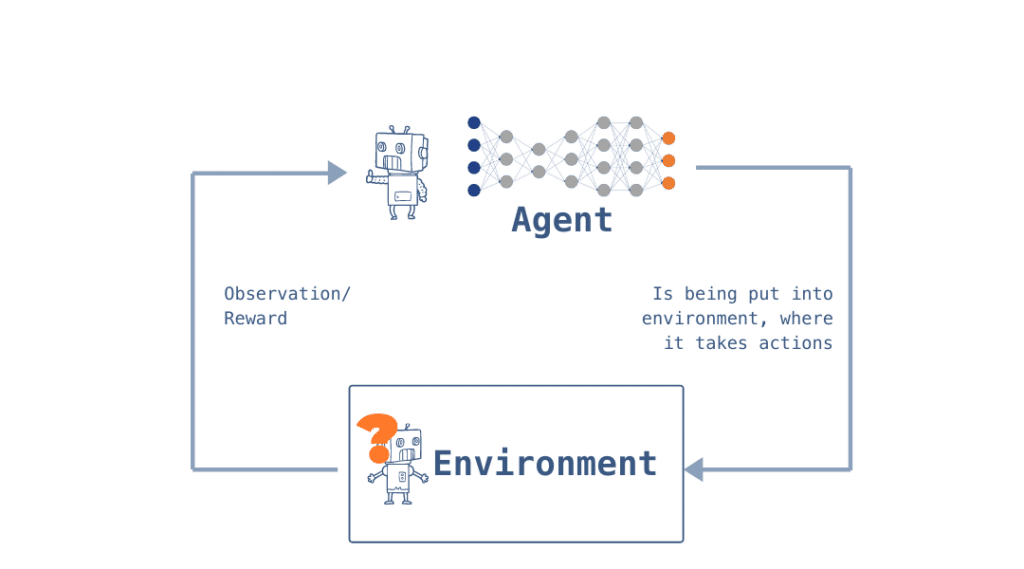The range of tasks that a machine can learn is very wide. In general, we distinguish between three different ways in which a machine can learn these tasks: Supervised LearningUnsupervised Learning and Reinforcement Learning. Essentially, the three types of learning differ in two aspects:
- The nature and existence of the so-called target variables
- The way in which the models are trained
Reinforcement learning is the third major way in which a machine can learn. The goal of reinforcement learning is to have a model make optimal decisions in a given environment. For example, a reinforcement learning algorithm for autonomous driving would aim to make decisions that ensure all traffic is safe and flows smoothly. Unlike supervised and unsupervised learning, where we use existing data, reinforcement learning places the model in an environment that it is supposed to explore itself and generate data in the process. This can be compared to a simulation.
Reinforcement learning is attracting increasing attention in the machine learning community. Unlike other types of learning, it does not rely on the availability of existing data as it generates its own data through simulations and can therefore be used in a variety of different situations. While reinforcement learning is still in the research stage, we can expect to see it used in breakthrough developments in AI development.
The main idea of reinforcement learning is to put a (software) agent in an environment where it can perform actions to maximise the best possible effect for itself.



